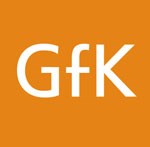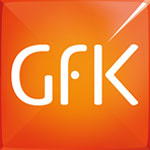Mixed results within technical consumer goods markets in Western Europe

The IT sector increased its sales in the third quarter of 2011 and recorded a growth rate of 1%. The other sectors suffered from a decline in demand, which resulted in an overall decrease in the market for technical consumer goods.
The leading countries are still Germany and Austria while Belgium and the Netherlands demonstrated stable development. The southern European countries, Greece, Italy, Portugal and Spain, which are especially affected by the economy crisis, struggled and posted negative sales trends.
Information technology: Cloud computing stimulates demand for IT infrastructure
The IT sector continued to experience very mixed developments, with a total sales growth of 1% in the third quarter of 2011. Overall, sales amounted to €13.1bn. Investments in networking infrastructure and connectivity are ongoing and are key drivers in the IT industry in the B2B as well as the B2C sector.
There was a double-digit growth rate in the Netherlands and Austria, followed by single-digit growth rates in Germany and Belgium. In Greece and Spain however, demand is suffering as a result of the difficult economic situation and unsettled consumers.
The effects and implications of cloud computing are clearly visible; the market for routers and switches showed positive development. Tablets remain in great demand for the coming months, not only for private consumers. With an increasing share in the B2B sector, tablets are becoming interesting for business applications as well. Looking ahead to the Christmas period, some niche markets seem to be promising, for example, portable e-readers for digital books, magazines and newspapers.
Telecommunication: Smartphones and accessories in demand
The telecommunication sector witnessed a decrease of 1.3% in the third quarter of 2011 in comparison with the same period of last year. Whereas the demand for smartphones is growing fast in 2011, the turnover for mobile handsets is not growing similarly. There is an ongoing high demand in Belgium and Austria, while France experienced accelerating sales growth in the third quarter 2011. In addition, the German market is growing for the first time since end of last year.
Average prices for smart and mobile phones remain stable and do not reflect the improved product mix. The reason for this is higher subsidies by the telecom carriers that help customers receive better value for money.
Smartphones are becoming more intelligent; they have better built-in cameras (which can even capture HD videos), a higher processor clock speed, bigger displays and other attractive features. In addition, with a Near Field Communication chip included they can even serve as electronic wallets. As smartphones are used in all areas of everyday life, accessories such as protective covers and headsets are also growing at a significant rate.
Small domestic appliances: Coffee and espresso machines still on upward trend
Western European consumers spent a total of €3.45bn on small domestic appliance (SDA) products in the third quarter of 2011. This corresponds to a drop of 2.3% compared with the third quarter of the previous year.
Nevertheless, cumulated growth figures for the three quarters of 2011 remain slightly positive. The Austrian and German markets all ended the quarter with single-digit growth in value terms. Spain on the other hand, suffered the biggest loss with a double-digit decline.
In the third quarter, the most important growth segment within the SDA sector is the coffee market; this was mainly due to the tremendous performance of fully automatic coffee/espresso machines and machines using capsules. German and Austrian consumers, in particular, are using fully automatic machines to get their daily cup of coffee. Capsule machines enjoy very high popularity in Portugal and Spain.
A closer look at the kitchen appliances segment reveals that the rise in turnover was driven by almost all sub segments. Kitchen machines, choppers and liquidisers performed particularly well. Within the personal care segment, electrical toothbrushes, laser/IPL based devices for hair removal as well as beard trimmers recorded a rise in sales.
Positive impulses in the floor care segment stem from the robotic vacuum cleaners as well as handsticks. In contrast, the decreasing sales of cylinder vacuum cleaners had a negative impact on the total result. Irons benefit from the increasing sales of integrated boards in Germany; however, traditional steam irons struggled in almost all countries as consumers are still switching from traditional irons to generators.
Major domestic appliances: Varied market development
Overall, the major domestic appliances (MDA) segment in Western Europe registered sales of €8.0bn in the third quarter of 2011, which corresponds to a negative growth rate of 3.3%. The reasons for this negative growth were the declines in the Spanish, Portuguese, Italian and Greek markets. Improvements in equipment e.g. energy efficiency in Spain or design features in Italy, rewarded brands that mainly operate in niche markets.
In contrast, robust growth was recorded in Germany and Austria, countries that are benefiting from an ongoing trend towards green and high quality products. France shows a rather steady development and stabilisation of prices after the decline over the last few months. Next to efficiency, capacity, design and convenience features such as no-frost, special wash programs and hobs with flexible induction zones are becoming increasingly important.
Office equipment and consumables: Declining market
Total sales of the Western European office equipment and consumables market amounted to €3.8bn in the third quarter of 2011; this is a year-on-year decrease of 6%. All countries showed decreases in this sector, with the exception of Belgium, which showed slight growth. Nevertheless, the extent of declines differs extremely from country to country. While Germany, France and Austria witnessed only a slight value decrease, sales in Italy, Netherlands, Spain and especially Portugal experienced double -digit declines.
Closer analysis of products within this sector reveals that laser multifunctional colour appliances are still showing a positive trend in terms of value. Inkjet printers and small photo printers, however, posted declines.
Although laser devices are performing better than inkjet printers, they too registered negative growth rates. There are positive signs coming from the consumables segment; inkjet cartridges returned to profit in the third quarter of 2011.
Photo: Interchangeable lenses and photo bags in demand
Total sales of €2.1bn in the photo sector in the third quarter 2011 correspond to a negative growth rate of 6.7%. Despite a positive sales development in Germany and Austria, the downward trend in the remaining Western European countries cannot be compensated. Greece, Italy, Portugal and Spain were heavily affected by the declining demand.
Sales in the digital cameras market remained stable. Within this segment, SLR cameras in particular, supplemented by compact system cameras, are performing well. The ongoing demand for cameras with interchangeable lenses in turn stimulated the accessories business. Interchangeable lenses and photo bags, in particular, are in demand. For an optimised usage of digital cameras with video functionality, consumers are buying more tripods. In relation to the downward trend within the camcorder and multimedia-camera segments, the convergence of these products is becoming very topical.
The focus is primarily on the competition between smartphones and digital cameras. This topic, as well as other trends affecting the photo market will be discussed by representatives from industry and retail at the Imaging Summit in Nuremberg on 5 December 5.
Consumer electronics: No improvement in sight
Western European consumers spent at total of €9.1bn on consumer electronics products in the third quarter of 2011; this is a year-on-year decline of 11.8%. Market development heavily relies on what happens within the flat TV market. Overall, flat TVs have almost penetrated most households across Western Europe and being flat is no longer an indication of innovation. The latest models are now equipped with 3D and internet technology, benefits which have to be communicated accordingly. In addition, consumers will now be faced with "energy labels", indicating the power consumption.
There are a number of growing opportunities for other segments within the sector. The home cinema approach is set to generate growth, and not only for big screens, while excellent sound along with docking functionalities are in demand. In addition, Blu Ray is continuously growing and is slowly replacing traditional DVD-players.
Overall, price erosion is affecting all segments, with the exception of hi-fi. At the moment, consumers are willing to spend more money for hi-fi components and speakers.
Clear north-south incline in Western Europe
Many consumers are still irritated by the unsolved crisis that is affecting the European financial markets. This is reflected in an ongoing reluctance to buy, a trend that has impacted on most Western European countries. Positive exceptions are Austria, Belgium, the Netherlands and particularly Germany, where the economy continues to show a stable development. Regarding Christmas business, now more than ever, manufacturers and retailers have to promote the added value of new technology and persuade consumers to buy these innovative products.
The survey
GfK TEMAX is an index developed by GfK Retail and Technology to track the technical consumer goods markets. The findings are based on surveys carried out on a regular basis by the retail panel of GfK Retail and Technology. The retail panel comprises data from over 370 000 retail outlets worldwide.
Since February 2009, GfK Retail and Technology has also been compiling the GfK TEMAX index at international level in more than 30 countries. It is believed to be the first index that includes all of the markets for technical consumer goods in different countries. All reports and press releases are available at www.gfktemax.com.
Source: GfK TEMAX
Source: GfK

The GfK Association was established in 1934 as a non-profit organization for the promotion of market research. Its membership consists of approximately 600 companies and individuals. The purpose of the Association is to develop innovative research methods in close cooperation with academic institutions, to promote the training and further education of market researchers, to observe the structures and developments in society, the economy and politics that play a key role in private consumption, and to research their effects on consumers. Survey results are made available to the membership. The GfK Association is a shareholder in GfK SE.
Go to: http://www.gfk.com






